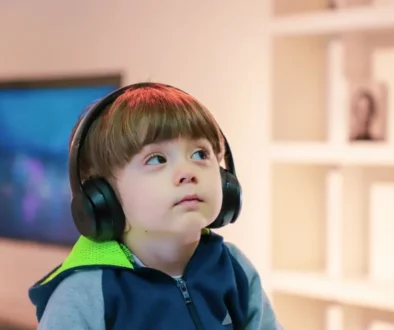Understanding Autism Spectrum Disorder: A Quick Guide
Did you know that one child out of 160 will receive a diagnosis of autism spectrum disorder (ASD)? This means that around 1% of the world’s population has ASD. Despite this large statistic, many people don’t know much about this condition.
If you know someone with autism, understanding autism spectrum disorder is something that may interest you. At first glance, ASD may seem hard to understand, but if you read through this article, you’ll find it’s easier to comprehend than you’d expect.
In this article, we’ll explore what autism is, what causes it, how it’s diagnosed, and how it’s treated. By the end, you’ll have a much better understanding of ASD.
Understanding Autism Spectrum Disorder
If you find yourself asking, “What is autism spectrum disorder exactly?” the answer has to do with brain development. ASD primarily affects the development of the brain and can cause changes in the way a person with ASD interacts with the world.
This includes changes in social skills and in how a person with ASD perceives the world. Often, these differences can make it difficult for people with ASD to interact and form close relationships with others. These issues appear in early infancy but sometimes can develop one or two years after birth.
These issues can often be recognized at school or in other public settings. The person with ASD will often be apart from other children and may enjoy different activities compared to other children.
The autism spectrum encompasses a total of five autism disorders that used to be classified individually. These disorders can range from mild to severe. These disorders include Asperger’s syndrome, Rett syndrome, Kanner’s syndrome, pervasive developmental disorder, and childhood disintegrative disorder.
Occasionally, Asperger’s syndrome is classified separately because it is so mild compared to other conditions on the autism spectrum. However, more often than not, it is included along with other spectrum disorders.
There is no cure for autism spectrum disorder. However, with proper treatment from an early age, people with ASD can grow up to lead fulfilling lives.
What Causes ASD
No autism spectrum disorder guide is complete without understanding what causes this condition. Unfortunately, an exact cause of ASD has not yet come to light. However, some believe genetic and environmental factors can play a part.
Research has found that certain genes are related to the development of ASD. Sometimes, ASD can occur when certain genes are mutated during development. These mutations may occur because of genetic factors or they may occur randomly.
In other cases, ASD can appear in conjunction with other genetic disorders such as Rett syndrome or fragile X syndrome. On the other hand, ASD may also develop from certain environmental factors. These factors often include pollutants, toxins, or medications that may affect the fetus during development.
What Are the Symptoms of ASD
As mentioned before, the symptoms of ASD may appear during infancy or at the age of one or two. Some of the earliest symptoms of ASD include a lack of responsiveness to others, including parents and other caregivers, as well as indifference.
In some cases, a child may appear to behave normally within the first year of life before becoming withdrawn and quiet. The signs of ASD, however, can vary drastically from child to child. For example, some may have difficulty learning while others show signs of high intelligence.
Some of the most common symptoms among all children with ASD include having trouble interacting and communicating socially. Children with ASD may be indifferent to someone calling their name and they may dislike being held or kissed.
Children with ASD may talk very rarely and when they do talk, they may find it difficult to carry a conversation. More than that, they may find it physically difficult to speak and produce coherent sentences. They often will avoid eye contact and will not often express emotion or be able to understand the emotion of others.
Beyond the social symptoms of ASD, there are behavioral symptoms as well.
Behavioral Patterns of ASD
The behavioral patterns of ASD are often very repetitive. These include rocking back and forth, flapping of the hands, or biting. Children with ASD may also create specific rituals for themselves and if these rituals are interrupted, they may become very upset.
Children with ASD may also become obsessed with certain details of an object. With time, some children with ASD may become better adjusted to social environments, but this is usually only for those who had mild cases of ASD in the first place.
How Is ASD Diagnosed
There is no specific test to arrive at an autism spectrum disorder diagnosis. Instead, your doctor will observe the child in question and be able to distinguish whether an autism diagnosis is warranted based on the child’s behavior. This can be done in person or via telemedicine.
The doctor may also perform hearing, language, and speech tests on the child. This will allow the doctor to determine if the child is developing as he or she should when compared to other children of the same age.
Genetic testing may also be an option. This would be beneficial if the doctor believes the child may have fragile X syndrome or Rett’s syndrome.
How IS ASD Treated
There is no cure for ASD, but there are treatment options available. The earlier the treatment begins, the better off the child will be later in life.
The treatment options usually include behavioral therapy and therapy to improve communication. However, educational therapy and highly-structured education plans may be needed as well.
A Guide to ASD
You now know all about ASD, how it’s caused, how it’s diagnosed, and how it’s treated. You will find that understanding autism spectrum disorder can help you better relate and help with those with the condition.
If you want to know more about this topic, contact us here.



